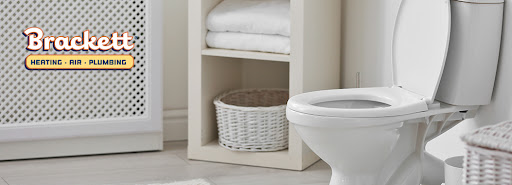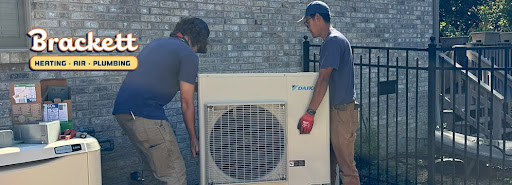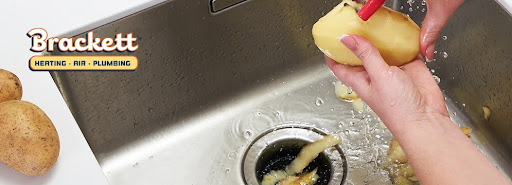A constantly running toilet is annoying. It also leads to a lot of wasted water and an increased water bill. If you’re dealing with a toilet that won’t stop running, you’re not alone. Many area homeowners face this issue. Fortunately, there are steps you can take to diagnose and possibly fix the problem without immediately reaching for the phone to call a plumber. In this guide, Brackett Heating, Air & Plumbing will walk you through the troubleshooting process and provide possible solutions for your toilet repair.
Toilet Won’t Stop Running: Understanding the Problem
A running toilet occurs when water keeps flowing into the toilet bowl after the flush. This can happen for several reasons, including a broken flapper, a damaged fill valve, or improper water level in the tank. Before you panic, let’s go through the step-by-step process to diagnose the problem and decide if you can complete the toilet repair yourself.
Step 1: Check the Flapper
A common cause for a toilet that won’t stop running is a malfunctioning flapper. The flapper is the rubber valve that seals the flush valve at the bottom of the tank. With use, the flapper can deteriorate over time. Sometimes, the flapper can become misaligned, allowing water to continuously leak into the bowl. You can easily check the flapper by doing the following:
- Lift the toilet tank lid.
- Flush the toilet and observe the flapper’s behavior.
- If the flapper doesn’t close completely after the flush, it’s likely causing the constant flow of water.
Step 2: Adjust the Chain
If the flapper is not closing properly, the chain connecting it to the flush handle might be too loose or too tight. You can solve this by adjusting the length of the chain. You want just enough slack for the flapper to close all the way. You’ll want to check the chain to make sure it’s not stretched too tight.
Step 3: Inspect the Fill Valve
Another possible reason why your toilet won’t shut off is a faulty fill valve. The fill valve is the part of the toilet’s inner workings that allows the tank to refill after a flush. If it doesn’t completely shut off, water will keep flowing into the tank. To diagnose and potentially repair the fill valve:
- Look inside the tank to locate the fill valve. It’s usually on the left side of the tank.
- Adjust the float arm by gently bending it downwards. This can help lower the water level and may solve the issue.
- If adjusting the float arm doesn’t work, the fill valve could need to be replaced. This toilet repair is a bit more complex. Call Brackett Heating, Air & Plumber to schedule a plumber in Evansville Indiana.
Step 4: Check the Water Level
An incorrect water level can also lead to a running toilet. If the water level is too high, it will spill into the overflow tube. The result is a continuous refill cycle. To adjust the water level:
- Look for the water level mark inside the tank.
- If the water level is above this mark, you’ll need to adjust the float to lower it.
- Gently bend the float arm downwards to lower the water level.
Step 5: Gather Necessary Supplies
If the steps above didn’t resolve the issue, you might need to replace some parts. Head to a local hardware store. If you’re a DIY person, purchase a toilet repair kit that includes a new flapper, fill valve, and the related parts you might need.
Step 6: Follow the Repair Kit Instructions
Most toilet repair kits come with detailed instructions to guide you through the replacement process. Follow the steps carefully, and make sure to shut off the water supply before starting any repairs. If you’re unsure about any step, it’s a good idea to consult the manufacturer’s instructions or seek assistance from a professional plumber. One of Brackett’s licensed plumbers can help. Call Brackett today to speak with one of our friendly and professional customer service representatives.
When to Call a Plumber
While many toilet issues can be resolved with DIY solutions, there are instances when it is best to call a plumber, especially if you’re not comfortable with the repair process or if the problem persists despite your efforts. Signs that it’s time to call in a professional plumber include:
- The issue is not in your skill set.
- You’ve attempted repairs, but the toilet still won’t stop running.
- The amount of water leaking out is increasing.
- You’re unable to diagnose the specific cause of the problem.
When you do need a plumber in Evansville, Indiana, one call to Brackett Heating, Air & Plumbing is all you need to make.
Conclusion
Dealing with a toilet that won’t stop running is frustrating. With the right help and troubleshooting, you might be able to address the issue without calling a plumber. By understanding the various components of your toilet, such as the flapper, fill valve, and float, you may be able to diagnose the problem and complete the toilet repair on your own.
Remember, if the issue is stressing you out, or you’re uncomfortable with the repair process, it’s always best to reach out to a professional plumber in Evansville, Indiana. The last thing you want is to cause the problem to get worse. The result could be even more wasted water and more expensive repairs.
If you have a toilet that won’t stop running, a clog, a water heater issue or another plumbing problem, contact Brackett Heating, Air & Plumbing to schedule an appointment today. Our plumbers are highly trained, professional, courteous, and ready to get your plumbing back to tip top shape.







